Novel strategy with acidic arginine solution for the treatment of influenza A virus infection (Review)
- Authors:
- Keiko Ikeda
- Hisashi Yamasaki
- Yukiko Suzuki
- A. Hajime Koyama
- Tsutomu Arakawa
-
View Affiliations
Affiliations:
Division of Virology, Department of Cellular and Molecular Medicine, Wakayama Medical University Graduate School of Medicine, Wakayama 641-8509, Japan
- Published online on: March 1, 2010 https://doi.org/10.3892/etm_00000039
-
Pages:
251-256
Metrics:
Total
Views: 0 (Spandidos Publications: | PMC Statistics:
)
Metrics:
Total PDF Downloads: 0 (Spandidos Publications: | PMC Statistics:
)
This article is mentioned in:
Abstract
There is already an indication of a potential worldwide spread of influenza projected for this coming autumn and winter. In this review, we propose an aqueous arginine solution as a novel agent for preventive measures and possible chemotherapy against influenza A virus infection. Influenza A virus spreads among the human population through both droplets and direct contact, and hand and mouth wash are the primary preventive measures. Upon contact, influenza A virus infects epithelial cells of the upper respiratory tracts in the initial phase of infection and spreads over the mucosal surface of the tracts, leading to varying degrees of inflammation near the site of infection. Arginine inactivates enveloped viruses, including influenza virus at an acidic pH or elevated temperature and hence may be used for preventive measures as a disinfectant and also for treatment of the infection. Because of the low cytotoxicity of arginine, virus inactivation may be performed at the site of infection in the form of a liquid or spray of an aqueous arginine solution. Acidic solvents have been used as a disinfectant and, to a limited extent, as a virus inactivation agent. Arginine may have the edge over acidic solvents due to its safety, or at least it may be used as an alternative option to acidic solvents or more specific antiviral drugs. Arginine as well as acidic solvents use a virus inactivation mechanism fundamentally different from the mechanism of antiviral chemotherapeutic drugs, i.e., through weak, but multiple, interactions with viral components. This eliminates the possibility of generating resistant viruses against arginine treatments.
View Figures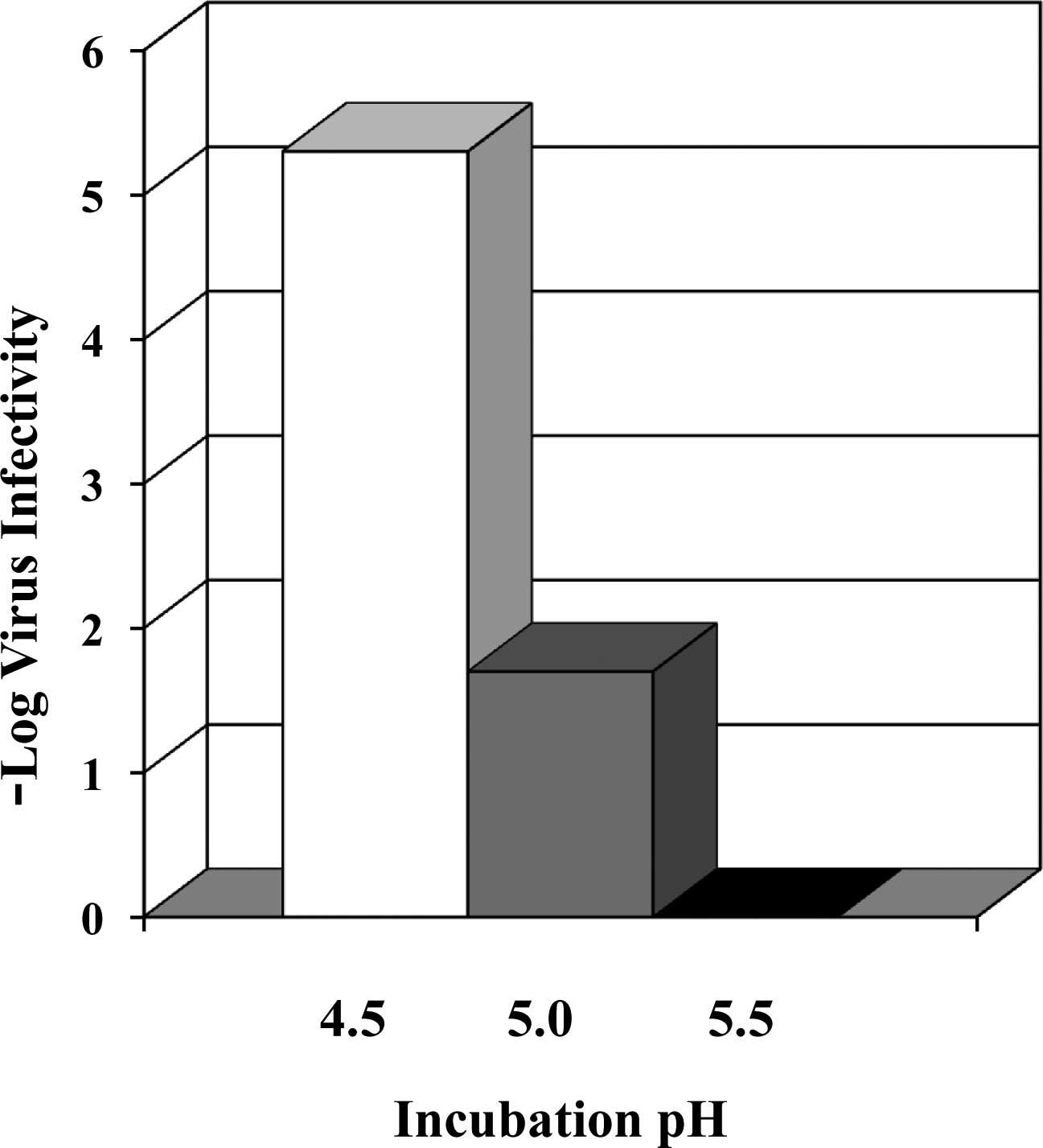 |
Figure 1
|
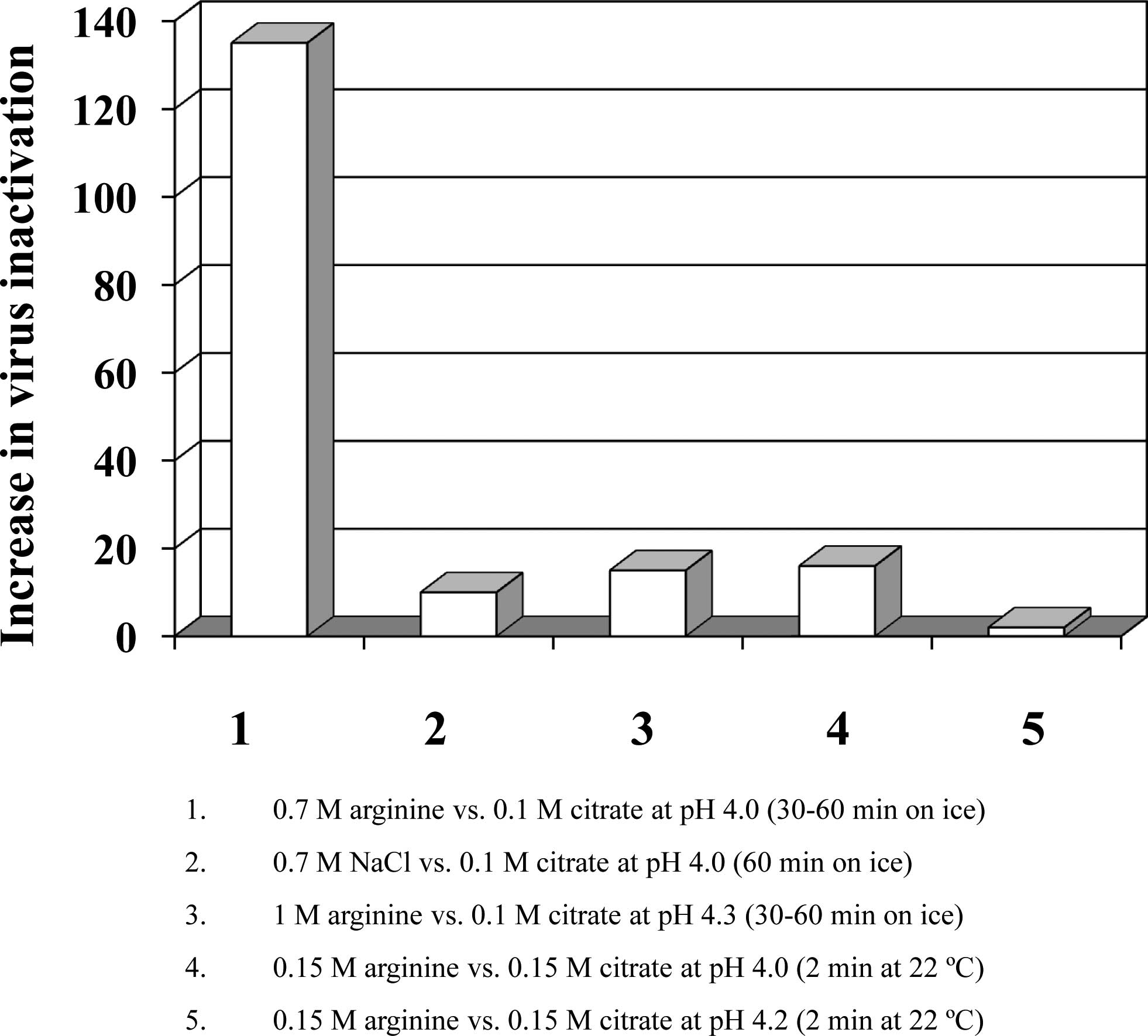 |
Figure 2
|
 |
Figure 3
|
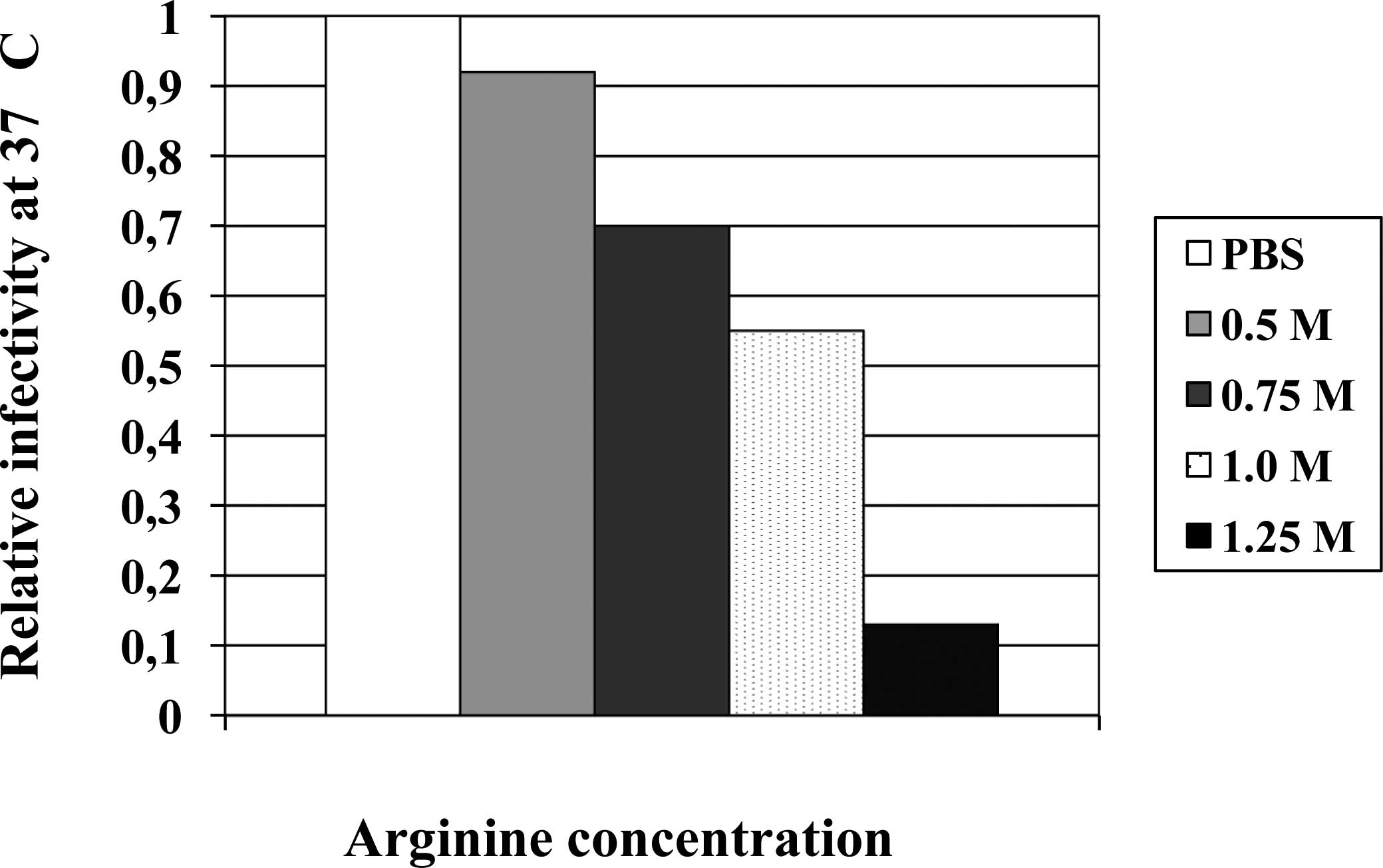 |
Figure 4
|
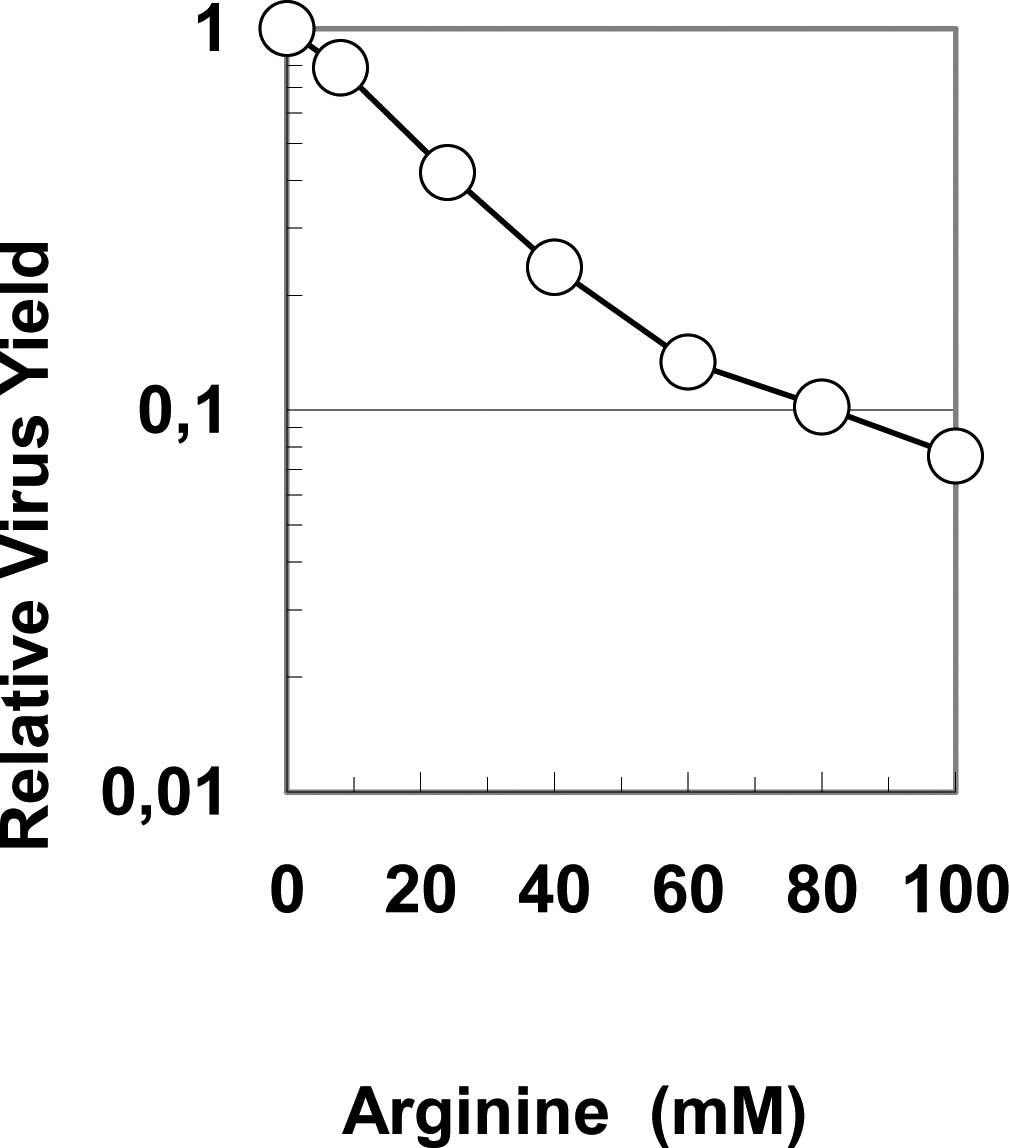 |
Figure 5
|
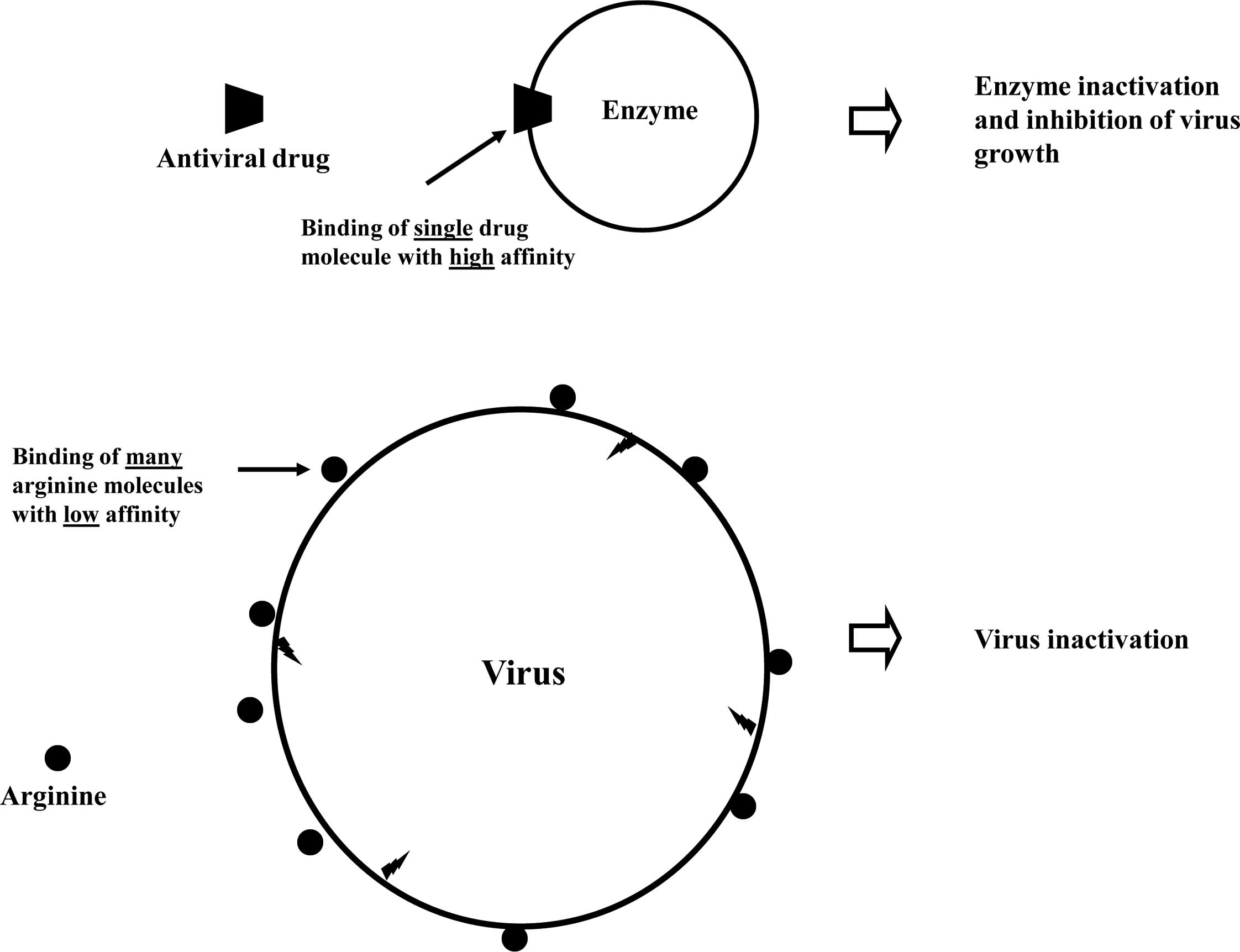 |
Figure 6
|
View References
|
1.
|
Wanaratana S, Tantilertcharoen R,
Sasipreeyajan J and Pakpinyo S: The inactivation of avian virus
subtype H5N1 isolated from chickens in Thailand by chemical and
physical treatments. Vet Microbiol. July 10–2009.(Epub ahead of
print).
|
|
2.
|
Patnayak DP, Prasad AM, Malik YS,
Ramakrishnan MA and Goyal SM: Efficacy of disinfectants and hand
sanitizers against respiratory viruses. Avian Dis. 52:199–202.
2008. View Article : Google Scholar : PubMed/NCBI
|
|
3.
|
Grayson ML, Melvani S, Druce J, Barr IG,
Ballard SA, Johnson PD, Mastorakos T and Birch C: Efficacy of soap
and water and alcohol-based hand-rub preparations against live H1N1
influenza virus on the hands of human volunteers. Clin Infect Dis.
48:285–291. 2009. View
Article : Google Scholar : PubMed/NCBI
|
|
4.
|
Lombardi ME, Ladman BS, Alphin RL and
Benson ER: Inactivation of avian influenza virus using common
detergents and chemicals. Avian Dis. 52:118–123. 2008. View Article : Google Scholar : PubMed/NCBI
|
|
5.
|
Alphin RL, Johnson KJ, Ladman BS and
Benson ER: Inactivation of avian influenza virus using four common
chemicals and one detergent. Poult Sci. 88:1181–1185. 2009.
View Article : Google Scholar : PubMed/NCBI
|
|
6.
|
Rennie O, Bowtell P, Hull D, Charbonneau
D, Lambkin-Williams R and Oxford J: Low pH gel intranasal sprays
inactivate influenza viruses in vitro and protect ferrets against
influenza infection. Respir Res. 8:382007. View Article : Google Scholar : PubMed/NCBI
|
|
7.
|
Democratis J, Pareek M and Stephenson I:
Use of neuraminidase inhibitors to combat pandemic influenza. J
Antimicrob Chemother. 58:911–915. 2006. View Article : Google Scholar : PubMed/NCBI
|
|
8.
|
McKimm-Breschkin JL: Resistance of
influenza virus to neuraminidase inhibitors: a review. Antiviral
Res. 47:1–17. 2000. View Article : Google Scholar
|
|
9.
|
Yamasaki H, Tsujimoto K, Koyama AH, Ejima
D and Arakawa T: Arginine facilitates inactivation of enveloped
viruses. J Pharm Sci. 97:3067–3073. 2007. View Article : Google Scholar : PubMed/NCBI
|
|
10.
|
Katsuyama Y, Yamasaki H, Tsujimoto K,
Koyama AH, Ejima D and Arakawa T: Butyroyl-arginine as a potent
virus inactivation agent. Int J Pharm. 361:92–98. 2008. View Article : Google Scholar : PubMed/NCBI
|
|
11.
|
Naito T, Irie H, Tsujimoto K, Ikeda K,
Arakawa T and Koyama AH: Antiviral effect of arginine against
herpes simplex virus type 1. Int J Mol Med. 23:495–499. 2009.
View Article : Google Scholar : PubMed/NCBI
|
|
12.
|
Utsunomiya H, Ichinose M, Tsujimoto K,
Katsuyama Y, Yamasaki H, Koyama AH, Ejima D and Arakawa T:
Co-operative thermal virus inactivation of herpes simplex virus and
influenza virus by arginine and NaCl. Int J Pharm. 366:99–102.
2009. View Article : Google Scholar : PubMed/NCBI
|
|
13.
|
Brorson K and Norling L: Current and
future approaches to ensure the viral safety of biopharmaceuticals.
Dev Biol. 118:17–29. 2004.PubMed/NCBI
|
|
14.
|
Vermeer AWP and Norde W: The thermal
stability of immunoglobulin: unfolding and aggregation of a
multi-domain protein. Biophys J. 78:394–404. 2000. View Article : Google Scholar : PubMed/NCBI
|
|
15.
|
Arakawa T and Tsumoto K: The effects of
arginine on refolding of aggregated proteins: not facilitate
refolding, but suppress aggregation. Biochem Biophys Res Commun.
304:921–927. 2003. View Article : Google Scholar : PubMed/NCBI
|















